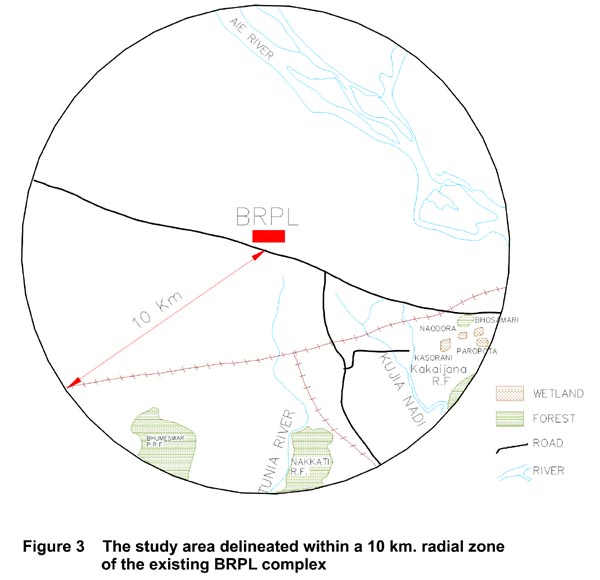Delineation Of The Study Area
|
The spatial limits for the ecological evaluation of impacts were defined based on the following two important considerations. i. Study area limits as dictated by environmental guidelines and legislative provisions for environmental assessment of industrial projects. ii. The potential of the project in contributing to the existing level of contamination of the physical and biological components of the environment. As per the existing guidelines (MoE&F, 1984) in respect of industrial projects listed in schedule I of EIA Notification, the observations for ecological assessment need to be made within 25 km radial zone. Subsequent Notification (MoE&F, June 1999) for Draft The following design features of the proposed project are other considerations for setting the boundaries for the study.
Considering the facts given above, the spatial limits of the impacts cannot be visuaiised the area beyond the 10 km radial zone of the proposed project. Even the natural life sustaining systems and the specific land uses that are more sensitive to industrial impacts, because of their specific nature and extent of fragility are not expected to be receptors of impacts in the area beyond 10 km radial zone. Hence for the purpose of this study , a 10 km radial zone from the existing BRPL complex has been delineated as the study area (Fig. 3).
|
Last Updated: September 28, 2015










